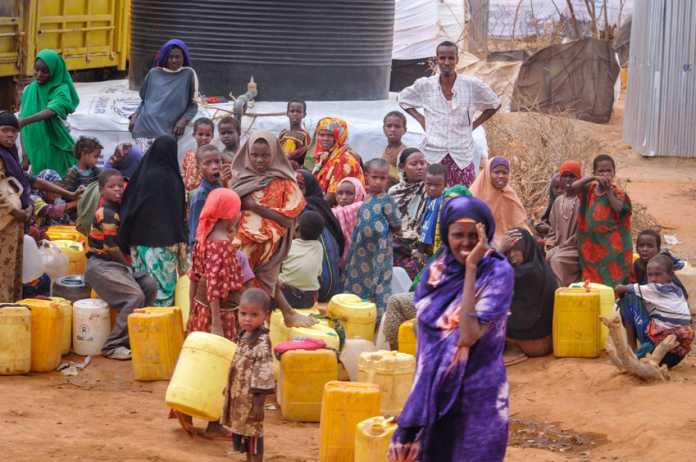A Google news search today of the term “climate change” turns up dozens of stories carried by the mainstream media claiming a study from the World Bank shows climate change could force more than 200 million people to migrate within the borders of their own countries from farms to cities. Like previous predictions made about climate change forced immigration, this is wrong. The claims are based on simulations from flawed computer models. Real world data paints a quite different story, showing crop production is increasing.
The Associated Press, The Hill, NBC News, Reuters, and Voice of America, were among the dozens of mainstream media outlets and news services publicizing a new report from the World Bank, titled “Groundswell.”
“Climate change is a powerful driver of internal migration because of its impacts on people’s livelihoods and loss of livability in highly exposed locations,” writes the World Bank. “[C]limate change, an increasingly potent driver of migration, could force 216 million people across six world regions to move within their countries by 2050.”
The main driver of internal migration, according to the World Bank, is that climate change will make farming increasingly difficult, forcing millions of people, mostly in agrarian developing countries, off their farms and into cities unprepared to handle the influx.
Had the media outlets hyping the Groundswell report bothered to examine existing data, they would have found the World Bank’s claims were unfounded. The World Bank’s immigration projections are based solely on computer models which the U.N. has recently admitted are flawed.
For example, CBS News’ coverage of the World Bank report highlights purported likely internal migration of tens of millions of people within Algeria, Bangladesh, and Tunisia as a result of climate change.
Wheat and barley are the two most important crops in Algeria and Tunisia. Between 2000 and 2019, a period the U.N. Intergovernmental Panel on Climate Change has referred to as the warmest two decades on record, crop production data from the United Nation Food and Agriculture Organization (FAO) show:
- Wheat production in Algeria increased by more than 409 percent and barley production increased by more than 909 percent.
- Wheat production in Tunisia increased by more than 71 percent and barley production increased by more than 289 percent.
Rice is Bangladesh’s top crop by a large margin. Between 2000 and 2019, FAO data show rice production in Bangladesh increased by more than 45 percent, setting new production records 13 of the past 19 years.
What’s true of Algeria, Bangladesh, and Tunisia is true for every region studied by the World Bank. As explained in Climate at a Glance: Crop Production, almost every nation on Earth is benefiting from steadily increasing crop yields as the Earth modestly warms. And as documented by the United Nations, the number of climate-related disasters has been declining this century. (See the figure)

It is a shame the mainstream media seems to have swallowed the World Bank’s bogus climate- induced migration claims hook, line, and sinker. Journalists should be more skeptical, especially since international agencies have made similar false predictions repeatedly in the past two decades only to have their prognostications prove untrue. For example, as detailed in Climate at a Glance: Climate Refugees, in 1989, a senior U.N. environmental official claimed, “entire nations could be wiped off the face of the Earth by rising sea levels if the global warming trend is not reversed by the year 2000.” Also, in 2005, the U.N. claimed, “Rising sea levels…will create up to 50 million environmental refugees by the end of the decade.”
Neither of these predictions, both based entirely on computer model projections, came true. The latter projection became such an embarrassment for the U.N. it tried to “disappear” the claim.
Climate change may provide an impetus for migration from farms to cities, but for good reasons, not bad. As crop yields improve, fewer people are needed on farms to raise crops. As nutrition improves and incomes increase, the history of development in developed countries show, increasing numbers of people demand greater access to education and over time migrate to cities to take non-farm related industrial, commercial, and white collar jobs.
Surely the World Bank and the mainstream media can’t disapprove of economic development and the poor in developing countries raising themselves out of a poverty previously so intractable that generation after generation of people are farm laborers out of necessity rather than choice.


















